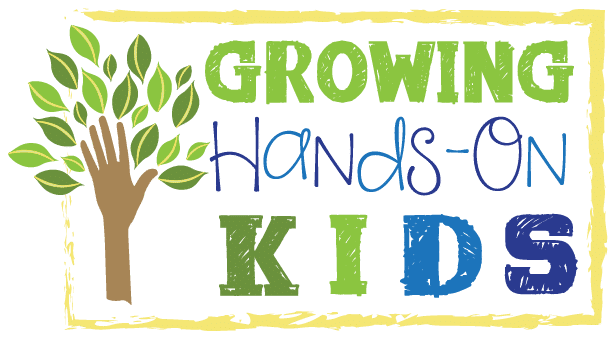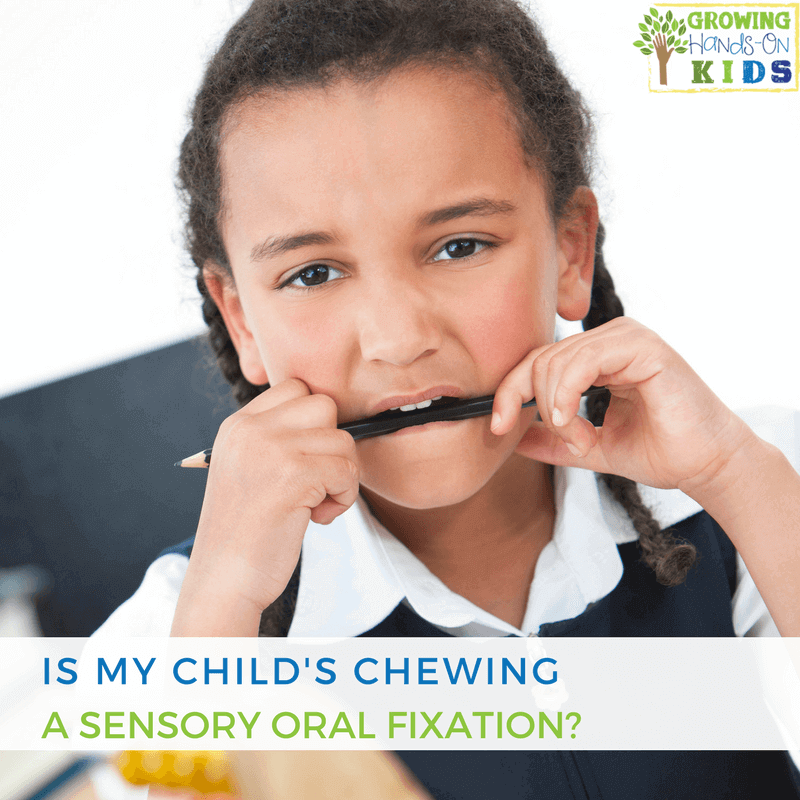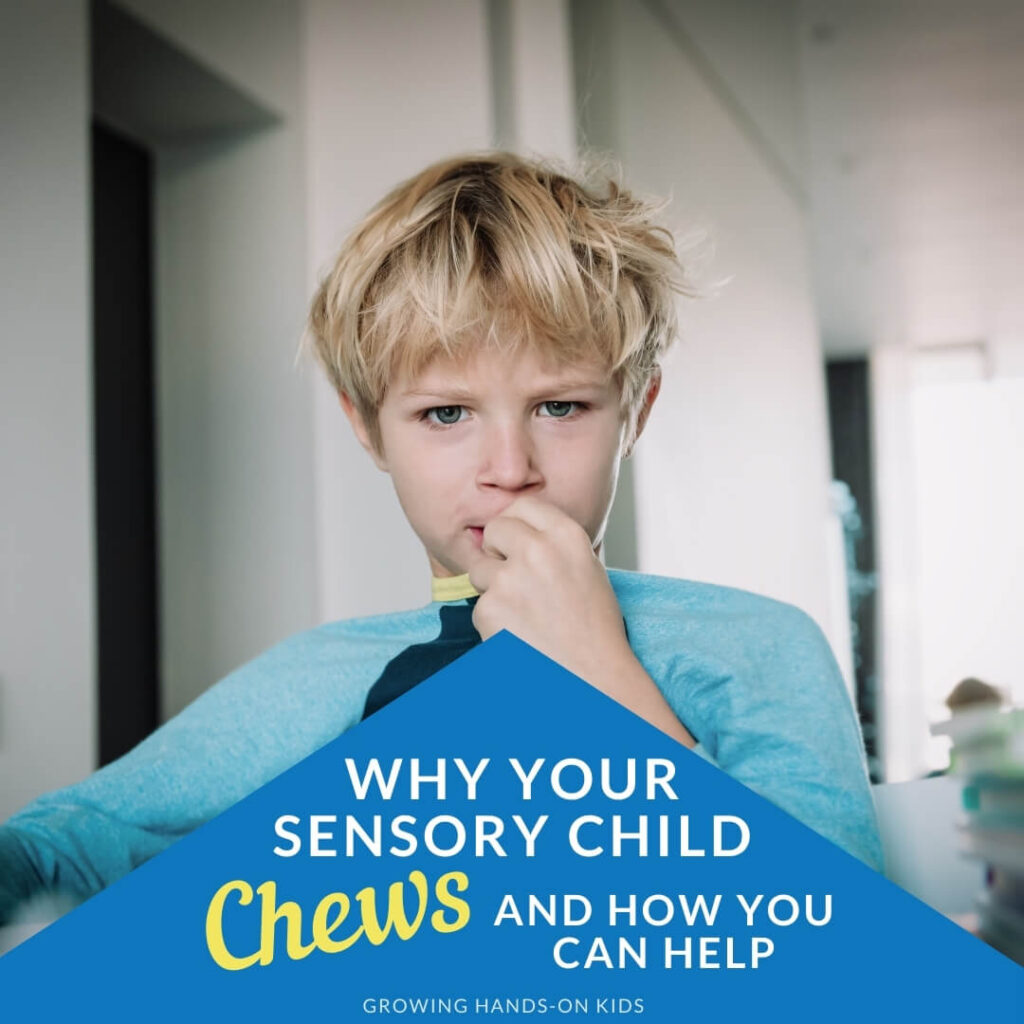Is My Child’s Chewing A Sensory Oral Fixation?
Affiliate and Referral links are used below to promote products I love and recommend. I receive a commission on any purchases made through these links. Please see my disclosure policy for more details. As an Amazon Associate, I earn from qualifying purchases.
Children can develop chewing habits over time and I am often asked when a parent should be concerned when their child chews. “Is my child's chewing a sensory oral fixation?” is a question many parents who suspect sensory concerns often ask.
We all have little habits that we develop over time to help us focus, during stressful situations, or when bored. For some people it may be twirling their hair, chewing on fingernails, tapping or chewing a pencil or pen.
Could it mean there are underlying sensory concerns? Or is it just a bad habit that needs re-directed?
Today we are going to look at some child development stages for chewing and oral motor skills and when you should possibly seek help or redirect your child.
There are stages of development when we expect children to chew on various objects. Young babies and toddlers come to mind when you think of this. Babies use their mouths to explore the world around them through taste. This is often common between the ages of birth and 18-24 months (resource: Oral Fixation vs. Oral Mouthing).
Toddlers often chew on various objects, especially when they are teething. My daughter definitely went through this stage at around 24 months. She had stopped putting things in her mouth for a few months and then all of a sudden started doing it again.
We knew she was teething due to molars coming in. We gave her appropriate things to chew on and also introduced some crunchier foods into her diet to help.
This is all expected and normal child development in oral motor skills.
When Does Chewing Become a Sensory Oral Fixation?
When chewing on objects becomes a noticed “problem” or fixation is usually when a child begins to attend daycare/Preschool or Kindergarten. Usually anytime after 24 months is when people start to take notice of chewing or oral fixations.
Teachers may notice a child who licks objects in the classroom or chews on their clothing or other classroom tools.
In extreme cases, a child may chew on themselves leaving marks and red areas, or could bite other children.
Or as a parent, you may notice your child licking or chewing on objects when you are out, particularly in a new environment.
Some children do have a tendency to focus on oral sensory input, which would explain this prolonged focus on licking, tasting, or chewing on objects.
To learn more about the oral sensory system, I have a blog post here with some tips for the gustatory system.
This does not mean your child has a sensory processing disorder, just that their bodies crave this type of sensory input. However, it also could mean some underlying sensory processing challenges if the behavior prevents them from focusing or participating in activities throughout their day without licking, tasting, or chewing on items.
The only way to know for sure is to talk to a professional, such as your pediatrician or an Occupational Therapist who specializes in sensory processing and pediatrics.
What Can I Do As A Parent/Teacher When I Notice A Child Chewing?
The first thing you can do is to redirect the child to chew on an appropriate item and take away the object you don’t want them chewing on.
Also providing lots of oral motor sensory input is helpful, such as chewy or crunchy items at snack or mealtimes.
Using straws to drink, particularly thicker liquids like smoothies or milkshakes is also helpful.
Chewing gum, particularly before a stressful situation or when out in a new environment, can also be helpful for older children.
And as always, if you suspect an underlying sensory cause or sensory processing issue or disorder, discuss this with your child’s pediatrician. For teachers, you would need to bring this behavior up to the parents and possibly suggest they talk to their doctor.
Providing appropriate items for a child to chew on during their day is always a great way to redirect the behavior appropriately.
Ark Therapeutics offers some great options for chewies and other oral motor fidgets and chewable products.
For more tips like this one be sure to follow my Occupational Therapy Tips Pinterest board.
You May Also Like:

Heather Greutman, COTA
Heather Greutman is a Certified Occupational Therapy Assistant with experience in school-based OT services for preschool through high school. She uses her background to share child development tips, tools, and strategies for parents, educators, and therapists. She is the author of many ebooks including The Basics of Fine Motor Skills, and Basics of Pre-Writing Skills, and co-author of Sensory Processing Explained: A Handbook for Parents and Educators.



Thanks for you article. I have been working with a 6 year old Downs Syndrome boy that is functioning at about 24 months. He has poor visual attention to everything except what he visually stims on and is constantly putting things in his mouth, clothing, crayons, pencils, toys, paper, etc. I have discussed with the teacher that we should provide him with something more appropriate to chew on but the teacher refuses and says that mom doesn’t want him to chew on chew tubes, chewable jewelry etc because they feel it will make the habit worse. I also talked to the teacher about crunchy snacks but no luck so far with the teacher. What would you suggest.
My daughter is 11 years old and was diagnosed with sensory-seeking SDyears ago.. She was also diagnosed with ADHD in 3rd grade. She is doing well in school, academically and socially. However, she always has something in her mouth, such as a Lego piece. My husband punishes her because he says it’s a choking danger. It started out as having to brush her teeth every time he discovered something in her mouth. Now it’s graduated to taking away screen time or doing chores. I’ve tried to explain to him that this behaviour is not something that should be punished; that her mouth craves sensation and he at one time did buy her some chewie ‘toys’ but they were too big and made her look different, especially in front of peers. What do you recoomend?
I would provide her with items that are appropriate to chew, such as the chewable jewelry or bracelet. Also providing crunchy snacks and sucking through a straw for drinks can be helpful.
I like your recommendations on what you can replace the bad things to chew on with. My son used to put his mouth on anything that could fit in it, but with the help of bendy straws, jerky, and chewing gum we got through it. Most of the time, it seems, this is just a child in need of stimulation.